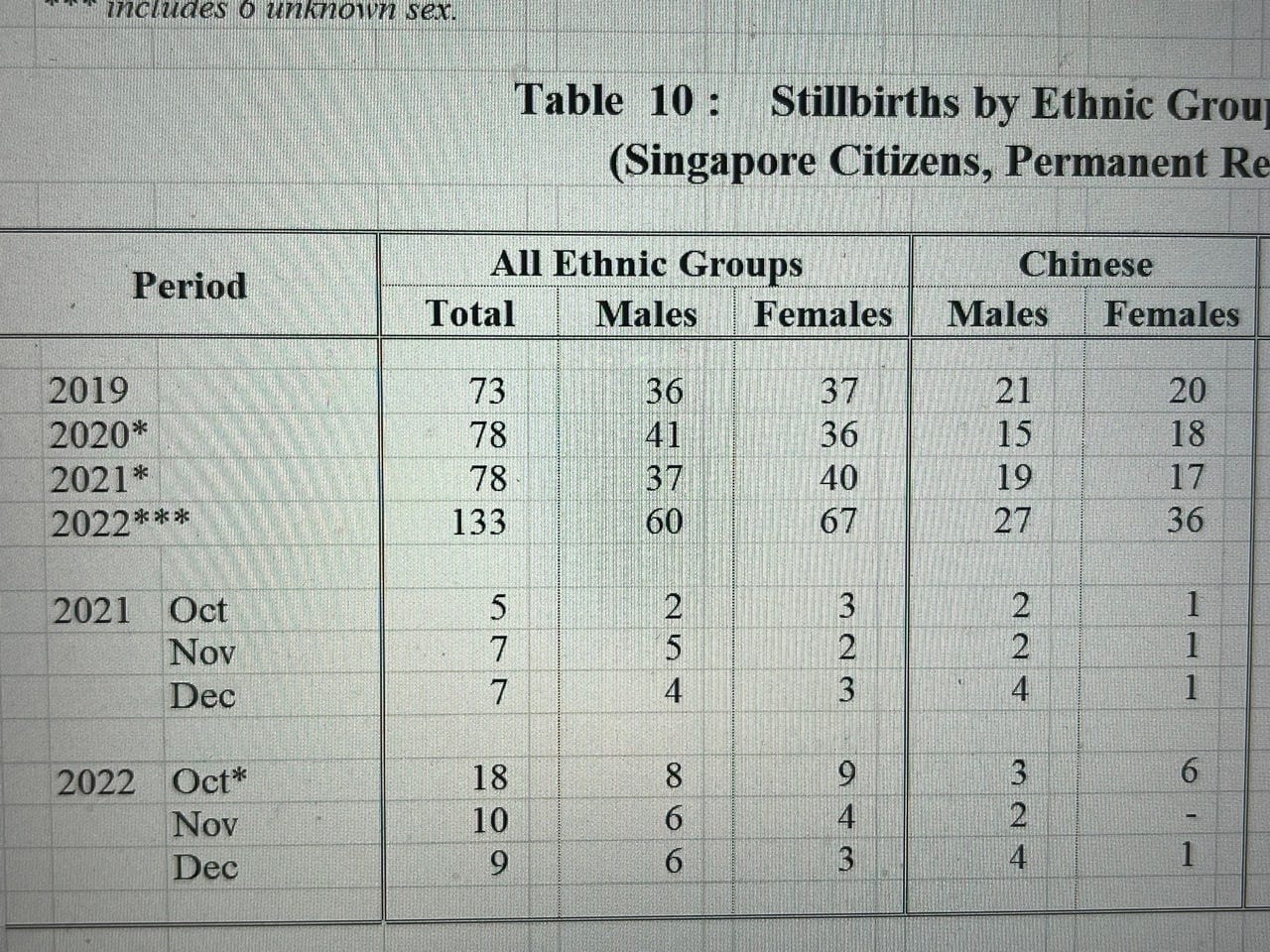Alex Berenson
Alex Berenson is a former New York Times reporter and the author of 13 novels, three non-fiction books, and the Unreported Truths booklets. His newest book, PANDEMIA, on the coronavirus and our response to it, was published on Nov. 30.
For two years, mRNA Covid vaccine sceptics have raised questions about whether the shots might damage fertility.
mRNA jabs alter menstrual cycles in some women. An Israeli study last June showed that sperm production falls after the Pfizer shot.
Worse, births are falling fast in many mRNA countries. The trend predates the shots, but in some countries it accelerated nine months after the widespread rollout of the jabs to women of childbearing age.
Still, data have not supported the worst fear of mRNA sceptics – a marked rise in late-term deaths or stillborn babies.
Until now.
The Asian city-state of Singapore is small, wealthy, regimented, and very good at collecting and publishing data. Last week, it released full-year 2022 data on deaths, live births, and stillbirths.
Here’s the chart on stillbirths. Official Singaporean government data, nothing less or more. The numbers speak for themselves:

73 stillbirths in 2019.
78 in 2020.
78 in 2021.
133 in 2022.
Looks like about a 70 per cent jump annually, after three years in which the figures remained essentially flat.
The reality is even worse.
Singapore puts out these reports each quarter. In the first quarter of 2022, it reported only 13 stillbirths, compared to 18 in 2021.
Thus, in April through December 2022, stillbirths doubled to 120 – from 60 during the same period a year before.
This increase in stillbirths from April through December did NOT occur because of a rise in births.
In fact, the opposite is true.
Births in Singapore fell 10 per cent in the final three quarters of 2022, a marked shift from the January-March period, when they rose about 1 per cent (due entirely to increases in January and February). The decline has not eased, either; births fell 15 per cent in December.
In other words, stillbirths doubled from April to December even as live births fell, reversing the early 2022 pattern.
This trend is particularly striking because of what happened nine months before the decline began, in early summer 2021.
Singapore carried out its Covid vaccinations as quickly and efficiently as it does everything.
As this chart demonstrates, nearly every Singaporean adult between 20-39 – childbearing age, essentially – received his or her first Covid vaccine jab in June and July 2021. (More than 98 per cent of the jabs Singapore gave were mRNAs, though Chinese inactivated virus vaccines were privately available.)

The story here is simple.
And worrying.
In March 2022, precisely nine months after mass mRNA vaccinations of women of childbearing age began – births in Singapore plunged, while stillbirths soared.
Are other countries seeing the same trend?
The only other country that I can find that has already published full live birth and stillbirth data for 2022 is Sweden. Sweden had a drop in live births comparable to Singapore in 2022. It also had a similar timing issue, with births rising early in 2022 and then falling nine months after mRNA administration.
But the Swedish rate of stillbirths per live birth was essentially unchanged in 2022, falling about 3 per cent.
That lack of a signal is obviously a positive sign, as are results from some other studies. (If you are aware of other countries that have published full or partial 2022 stillbirth data, please email me.)
Still, the Singaporean data are striking enough – both in the size of the increase and its timing – to again raise the question of whether the mRNAs are contributing to an accelerating fertility decline.
Expect governments and scientists to do everything possible NOT to answer this crucial question.









